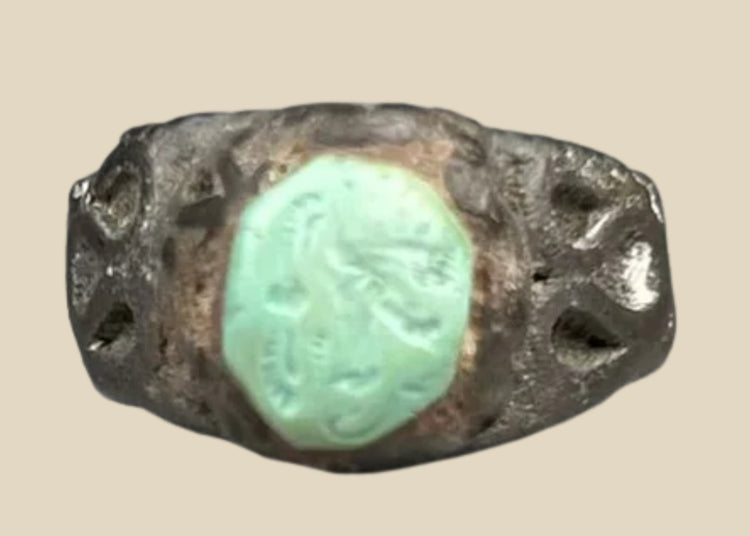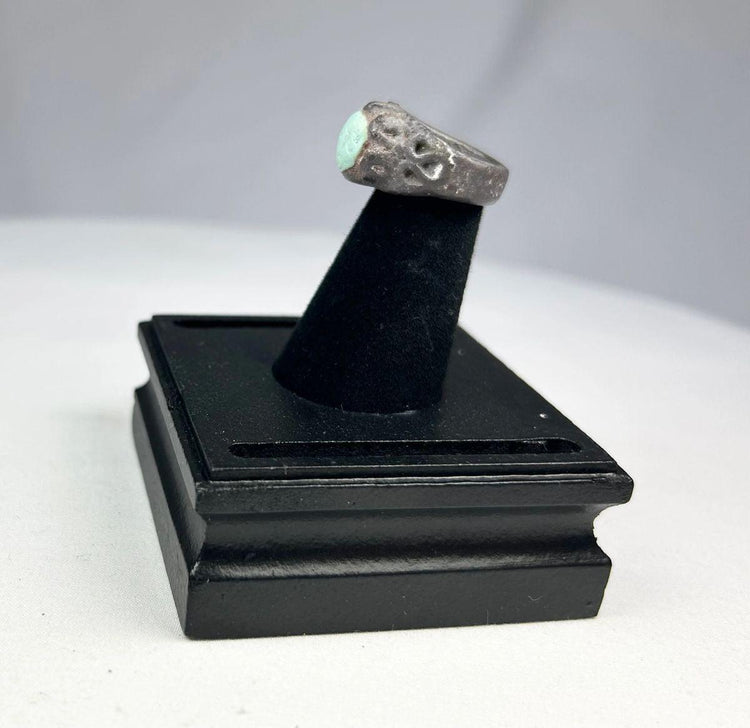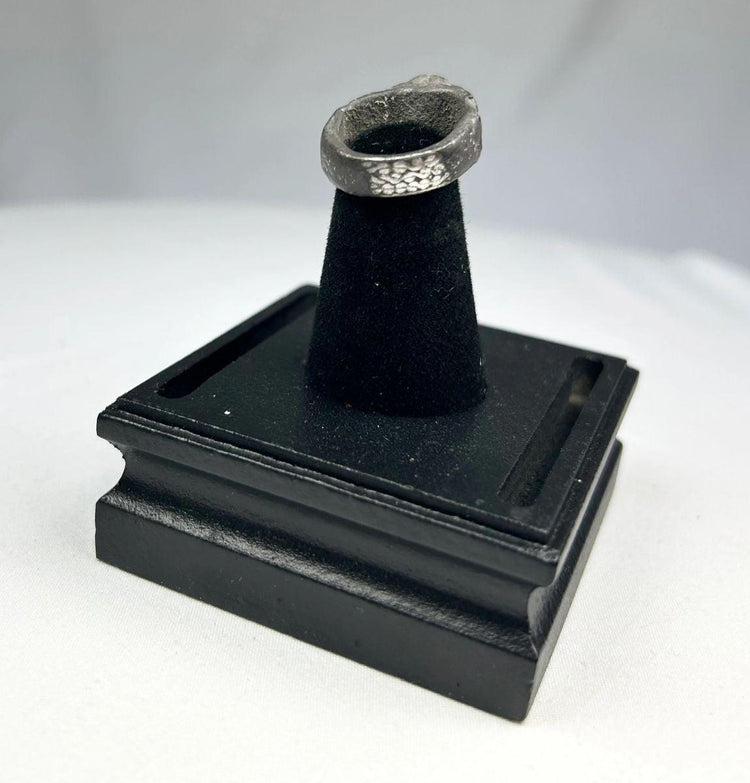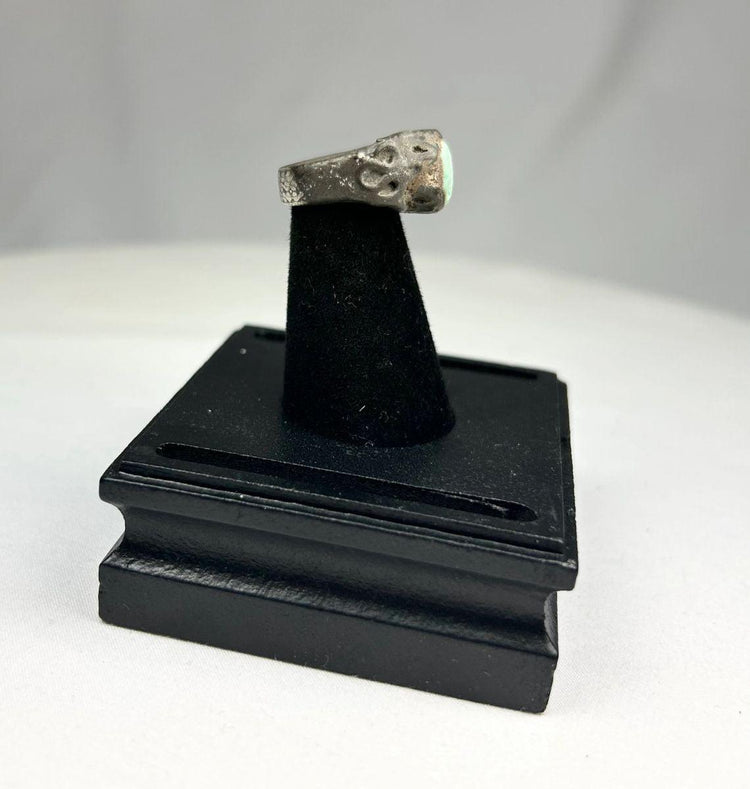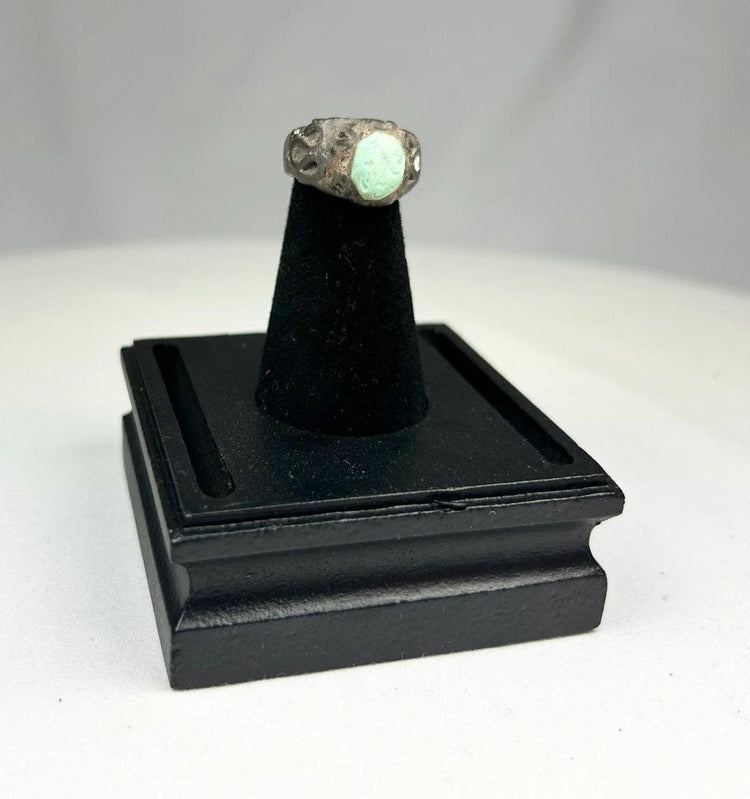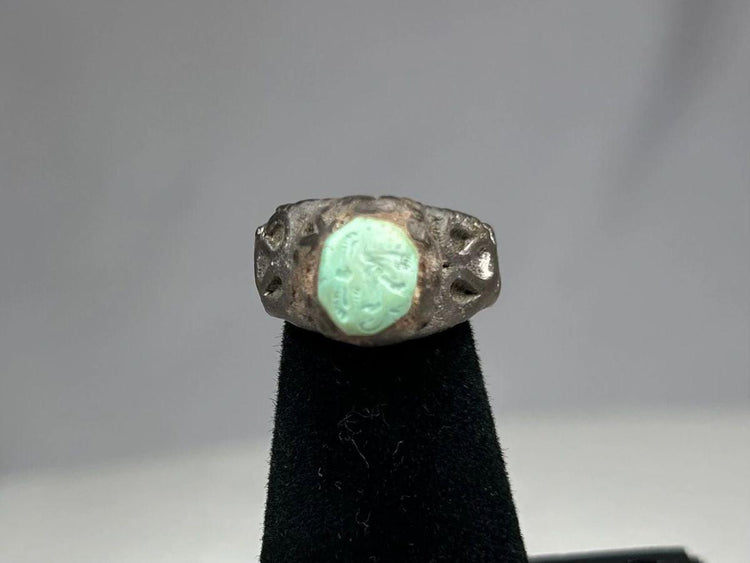Néo-assyrien | Bague en argent et turquoise | Vers le IXe-VIIe siècle avant J.-C.
Description
Plus
Moins
Contexte historique et origine
Région : Mésopotamie antique (Irak actuel)
Matériau : Argent avec incrustations de turquoise
Période : Empire néo-assyrien, IXe-VIIe siècle avant J.-C.
Description
Cette rare et remarquable bague ancienne en argent, datant de la période néo-assyrienne, illustre le raffinement de l'artisanat mésopotamien antique. Elle est ornée d'une turquoise éclatante sertie sur un chaton surélevé, encadré de gravures complexes représentant un serpent ailé et une bête fantastique. Ces motifs, profondément ancrés dans la culture visuelle assyrienne, symbolisaient la protection divine, l'autorité et le pouvoir spirituel. Mesurant environ 3,8 cm de diamètre, cette pièce exceptionnelle incarne à la fois l'élégance et le symbolisme du Proche-Orient ancien.
Caractéristiques
- Pierre turquoise frappante, soigneusement sertie dans une lunette proéminente
- Motifs gravés de serpents ailés et de bêtes mythiques, reflétant la cosmologie assyrienne
- Bague en argent avec surface patinée, présentant des signes naturels de vieillissement et d'utilisation
- Un bel exemple de techniques d'orfèvrerie et de sertissage de pierres précieuses assyriennes
Importance culturelle
L'Empire néo-assyrien (IXe-VIIe siècle av. J.-C.) était l'une des civilisations les plus puissantes du Proche-Orient ancien, réputé pour son architecture monumentale, son imagerie mythologique et son symbolisme religieux. Les bijoux comme cette bague n'étaient pas seulement ornementaux : ils étaient porteurs d'une profonde signification culturelle et spirituelle. L'inclusion de créatures protectrices comme le serpent et la bête souligne les thèmes de la protection divine et de l'autorité impériale, liant ainsi celui qui la porte aux valeurs de force, de protection et de légitimité de l'empire.
Condition
Bien conservé, l'argent présente une patine naturelle. La turquoise a conservé sa couleur d'origine, avec une légère usure due à sa grande ancienneté. Les motifs gravés restent lisibles, témoignant du savoir-faire minutieux des artisans assyriens.
Dimensions
Diamètre : environ 1,5 po
Taille de la bague : 3 US
Âge
Période néo-assyrienne, vers le IXe-VIIe siècle avant J.-C.
Description
Contexte historique et origine
Région : Mésopotamie antique (Irak actuel)
Matériau : Argent avec incrustations de turquoise
Période : Empire néo-assyrien, IXe-VIIe siècle avant J.-C.
Description
Cette rare et remarquable bague ancienne en argent, datant de la période néo-assyrienne, illustre le raffinement de l'artisanat mésopotamien antique. Elle est ornée d'une turquoise éclatante sertie sur un chaton surélevé, encadré de gravures complexes représentant un serpent ailé et une bête fantastique. Ces motifs, profondément ancrés dans la culture visuelle assyrienne, symbolisaient la protection divine, l'autorité et le pouvoir spirituel. Mesurant environ 3,8 cm de diamètre, cette pièce exceptionnelle incarne à la fois l'élégance et le symbolisme du Proche-Orient ancien.
Caractéristiques
- Pierre turquoise frappante, soigneusement sertie dans une lunette proéminente
- Motifs gravés de serpents ailés et de bêtes mythiques, reflétant la cosmologie assyrienne
- Bague en argent avec surface patinée, présentant des signes naturels de vieillissement et d'utilisation
- Un bel exemple de techniques d'orfèvrerie et de sertissage de pierres précieuses assyriennes
Importance culturelle
L'Empire néo-assyrien (IXe-VIIe siècle av. J.-C.) était l'une des civilisations les plus puissantes du Proche-Orient ancien, réputé pour son architecture monumentale, son imagerie mythologique et son symbolisme religieux. Les bijoux comme cette bague n'étaient pas seulement ornementaux : ils étaient porteurs d'une profonde signification culturelle et spirituelle. L'inclusion de créatures protectrices comme le serpent et la bête souligne les thèmes de la protection divine et de l'autorité impériale, liant ainsi celui qui la porte aux valeurs de force, de protection et de légitimité de l'empire.
Condition
Bien conservé, l'argent présente une patine naturelle. La turquoise a conservé sa couleur d'origine, avec une légère usure due à sa grande ancienneté. Les motifs gravés restent lisibles, témoignant du savoir-faire minutieux des artisans assyriens.
Dimensions
Diamètre : environ 1,5 po
Taille de la bague : 3 US
Âge
Période néo-assyrienne, vers le IXe-VIIe siècle avant J.-C.
Vous aimerez peut-être aussi




















